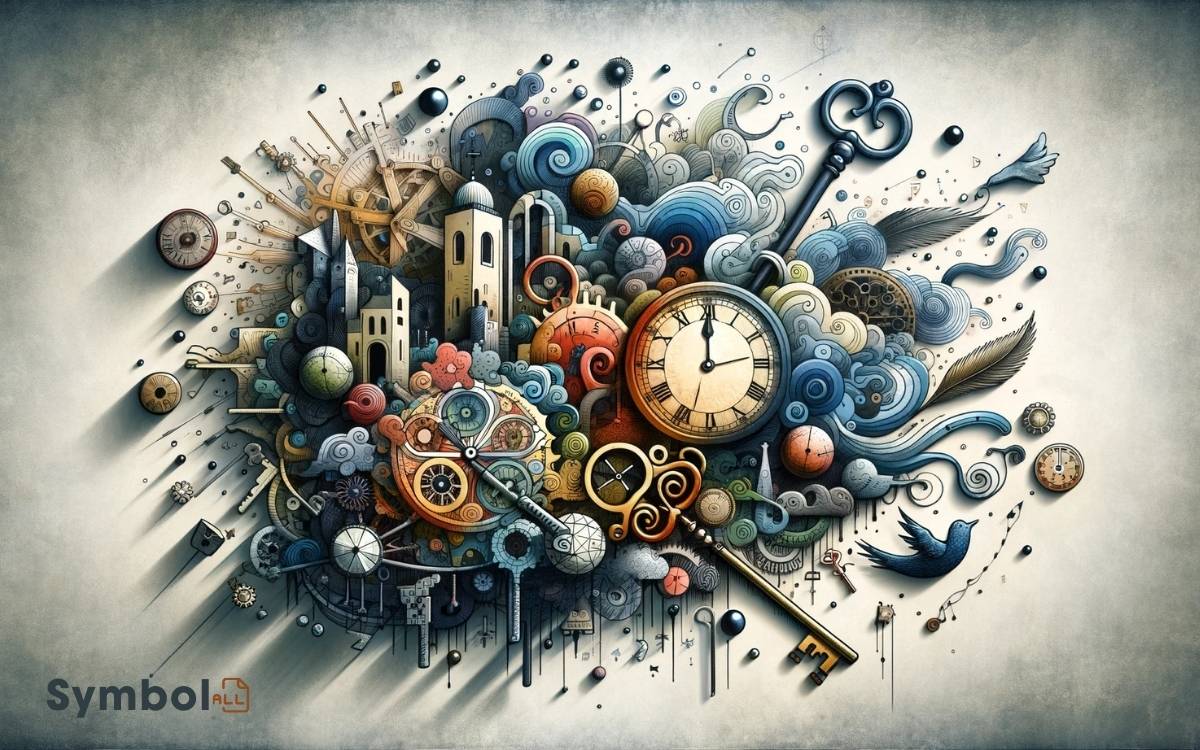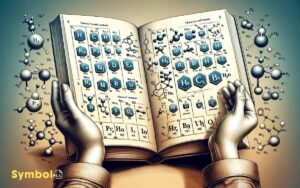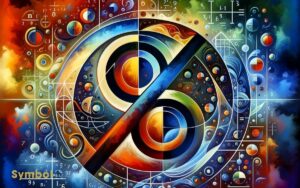How Are Symbols Often Used in a Story? Explains!
In stories, you’ll find symbols acting as a key between the tangible world and deeper, abstract concepts. They’re meticulously chosen to resonate with you, enriching your understanding by adding layers of meaning.
Whether it’s through objects, characters, or settings, symbols urge you to engage more deeply, uncovering nuanced messages for a profound experience.
They evoke emotions, making abstract feelings tangible and relatable, thereby enhancing your empathy towards characters and engagement with the story.
Symbols also mirror your own emotions and experiences, magnifying the impact of the narrative. As you explore symbolism further, you discover keys to revealing the story’s full richness.

Key Takeaways
Defining Symbolism in Narrative
Symbolism in narrative serves as a bridge, connecting the tangible elements of a story with its deeper, often abstract meanings, inviting you to explore beyond the surface.
When you investigate a narrative, symbols act as keys opening layers of meaning, enriching your understanding of the story and its themes.
These symbols can be objects, characters, or settings that carry weight beyond their literal existence, embodying complex ideas, emotions, or societal critiques.
They’re not just decorative elements but are meticulously chosen to resonate with you, urging a deeper engagement with the narrative.
Analyzing symbols allows you to uncover the nuanced messages authors weave into their work, providing a richer, more profound reading experience. This exploration transforms a simple story into a multi-dimensional tapestry of insights and reflections.
Symbols as Emotional Triggers
In literature, certain symbols can powerfully evoke emotions, acting as catalysts that deeply connect you to the story’s underlying themes and characters.
These symbols serve not just as decorative elements but as emotional triggers, engaging you on a deeper, more personal level. They can transform the narrative landscape, making abstract feelings tangible and relatable.
| Symbol | Emotional Trigger | Example in Literature |
|---|---|---|
| Storm | Turmoil, conflict | The tempest in The Tempest |
| Doves | Peace, purity | Doves in Romeo and Juliet |
| Chains | Oppression, bondage | Marley’s chains in A Christmas Carol |
This table showcases how symbols function as emotional conduits, enhancing your understanding and empathy towards the characters and their journeys, by mirroring your own emotions and experiences.
Conveying Themes Through Symbols
Beyond serving as emotional triggers, symbols also play an essential role in unfolding the themes within a story, offering you a deeper, more nuanced understanding of its core messages.
By carefully weaving symbols into the narrative fabric, authors can subtly guide you toward key insights without direct exposition.
This technique enriches the storytelling, making the themes resonate more profoundly with your experiences and perceptions.
For instance, a recurring motif like a storm mightn’t only symbolize turmoil but also reflect the internal conflicts of characters, mirroring the overarching theme of struggle against adversity.
Through such symbols, you’re invited to explore the layers of meaning, encouraging a more engaged and reflective reading experience.
This method of embedding themes guarantees that the story’s message lingers, prompting further contemplation and discussion.
Symbolic Character Development
Delving into the narrative, you’ll find that characters often undergo transformations that, through the lens of symbolism, reveal deeper insights into their personal journeys and the story’s broader themes.
For instance, a character might begin their journey with a heavy, worn coat symbolizing the weight of their past burdens.
As they confront and overcome obstacles, they might shed this coat, symbolizing their liberation from past traumas and a rebirth into a new phase of life.
This symbolic character development allows you as a reader to grasp not just the surface-level changes but the profound, internal shifts within the character.
It’s a nuanced way of showing growth, change, and the impact of experiences, making the character’s evolution both more relatable and impactful.
Setting and Atmosphere Enhancement
You can elevate your story’s setting and atmosphere by meticulously choosing symbols that resonate with specific time periods, evoke powerful emotional responses, and cultivate a rich cultural context.
These symbols act as shortcuts, instantly transporting readers to the desired era, mood, or societal setting without needing extensive exposition.
Symbolizing Time Periods
Incorporating symbols to evoke specific time periods can profoundly enhance a story’s setting and atmosphere, immersing readers in the narrative’s historical context.
By selecting symbols that are intrinsically linked to a particular era, authors can subtly convey the essence of that time without resorting to lengthy expositions.
For instance, the use of a gas lamp in a Victorian setting not only illuminates the scene but also symbolizes the era’s technological advancements and societal norms.
Similarly, a jazz record playing in the background of a scene can instantly transport readers to the Roaring Twenties, evoking images of speakeasies and flappers.
These symbols serve as shortcuts, enabling writers to create a vivid, authentic world that readers can effortlessly visualize and understand, enriching the storytelling experience.
Evoking Emotional Responses
Beyond symbolizing time periods, selecting the right symbols can also play a pivotal role in evoking deep emotional responses, thereby enhancing the setting and atmosphere of a story.
Symbols act as keys revealing emotions and memories, guiding readers to feel the intended emotional palette of a scene. Through careful selection, you can transform the abstract into tangible emotional experiences. For example, explosive material warning symbols might not just signify danger but could evoke a visceral sense of tension or anticipation, depending on the context of your story. These visuals draw on universal associations, allowing readers to connect deeply with the narrative’s emotional undertones. By embedding such symbols thoughtfully, you invite readers to engage with the scene on a more subconscious, intuitive level.
- A wilting flower symbolizes loss and fragility, enveloping the reader in a sense of melancholy.
- An unrelenting storm evokes a feeling of turmoil and conflict, mirroring the internal struggles of characters.
- A rising sun signifies hope and renewal, illuminating paths to new beginnings.
These symbols, woven seamlessly into the narrative, enrich the storytelling, making it resonate on a profoundly emotional level.
Cultivating Cultural Context
Exploring the cultural context of a story can greatly enhance its setting and atmosphere, providing readers with a vivid backdrop against which the narrative unfolds.
By weaving symbols that resonate with specific cultures, you’re not just telling a story; you’re immersing your audience in a world that’s rich with meaning and tradition.
These symbols serve as bridges, connecting your readers to the characters and their journeys on a deeper level. They’re not mere decorations but pivotal elements that illuminate the cultural nuances and societal norms of the setting.
Such an approach doesn’t only enrich the narrative; it invites readers to explore and understand cultures beyond their own.
Through this lens, symbols become a powerful tool in crafting a story that’s as informative as it’s engaging.
Foreshadowing With Symbols
You’ll find that mastering foreshadowing through symbols allows you to plant seeds in your narrative that, when revealed, enrich the story’s depth and intricacy.
By identifying foreshadowing elements early on, you’re not just telling a story; you’re weaving a tapestry where every thread has meaning.
This technique not only enhances symbolic meanings but also greatly boosts readers’ anticipation, making the unfolding of the plot a deeply engaging experience.
Identifying Foreshadowing Elements
In literature, symbols often serve as harbingers of future events, subtly hinting at what’s to come through imagery and motifs that resonate with deeper meanings. When you’re seeking to identify these foreshadowing elements, consider how symbols are woven into the narrative fabric.
- A storm cloud looming on the horizon can symbolize impending trouble or conflict within the story, suggesting that characters might soon face challenges or turmoil.
- A broken mirror might foreshadow misfortune or a significant change, reflecting the idea of shattered expectations or altered realities.
- The unexpected appearance of a black cat could hint at looming bad luck or deceit, urging readers to question appearances and anticipate twists in the plot.
Symbolic Meanings Unveiled
After identifying foreshadowing elements, it’s essential to uncover the symbolic meanings they veil, offering deeper insights into the narrative’s unfolding events.
Symbols in a story aren’t just mere decorations; they’re strategic tools used by authors to hint at future happenings or themes without directly stating them. For instance, a storm mightn’t just forecast bad weather; it could symbolize impending conflict or emotional turmoil.
Diving into these symbols requires you to engage with the text on a more profound level, piecing together the clues left by the author. This analytical process enriches your understanding, allowing you to appreciate the narrative’s complexity and the meticulous craft behind its construction.
It’s a journey that transforms reading into a detective’s quest, where each symbol you decode brings you closer to the heart of the story.
Impact on Readers Anticipation
Foreshadowing with symbols profoundly shapes a reader’s anticipation, subtly guiding their expectations and engagement with the unfolding narrative.
When you encounter symbols within a story, they’re not just decorative elements; they’re meticulously placed clues that prepare you for what’s to come.
This technique enriches your reading experience by adding layers of meaning and depth to the story.
Consider how:
- A storm cloud looming on the horizon might symbolize impending conflict or emotional turmoil.
- A shattered mirror could foreshadow a character’s broken relationship or distorted self-perception.
- The unexpected bloom of a flower in winter might hint at hope or renewal amidst despair.
These symbols, woven into the fabric of the narrative, cue you into underlying themes and future events, making every twist and turn more impactful and resonant.
Symbolic Motifs and Repetition
Symbolic motifs and their repetition throughout a story serve as the threads that weave together the fabric of the narrative, offering deeper insights into themes and character development.
You’ll find that these motifs, when repeated, can subtly or dramatically influence your interpretation of the story and its characters.
Let’s look at a simple table to illustrate how symbolic motifs are commonly used:
| Symbol | Meaning | Example in Story |
|---|---|---|
| Water | Life or renewal | A character’s baptism-like experience |
| Winter | Death or stagnation | A setting that foreshadows hardship |
| Birds | Freedom or entrapment | Birds flying away as a sign of loss |
| Light | Knowledge or truth | A sudden light illuminating a dark secret |
| Forest | Mystery or danger | A journey through woods symbolizing a trial |
Cultural and Historical Symbols
Exploring the domain of cultural and historical symbols, you’ll uncover layers of meaning that resonate beyond the surface of the narrative, enriching your understanding of the story’s context and depth.
These symbols serve as bridges between the past and present, offering insights into the collective psyche and societal norms that have shaped human behavior over centuries.
- The Cross: Often symbolizes faith, sacrifice, and redemption, deeply rooted in Christian traditions.
- The Phoenix: Represents rebirth, renewal, and eternal life, drawing from ancient mythology.
- Cherry Blossoms: In Japanese culture, signify the fleeting nature of life and beauty, reminding readers of the importance of mindfulness and the transient nature of existence.
Conclusion
In weaving the rich tapestry of a narrative, symbols act as the vibrant threads that bind the story’s soul. They’re the whispers of unseen emotions, the shadows of deeper themes, and the mirrors reflecting characters’ growth.
Like stars guiding through the night, they illuminate paths of understanding, painting stories in hues unseen but deeply felt. Each repetition, a heartbeat; each motif, a breath.
Your journey through the narrative becomes a dance with symbols, where every step uncovers hidden worlds within words.






